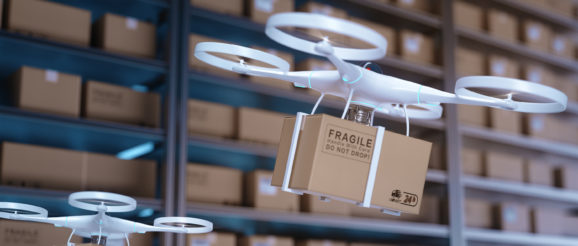What Makes Innovation Possible?

What Makes Innovation Possible?
Innovation is required for breakthrough technologies to be developed and implemented. Overwhelmingly, when innovation is fostered, the resulting technologies are beneficial to all involved.
Recently, we’ve seen how effective drone deliveries can be in solving key logistical problems for healthcare. Drone deliveries are successfully being used by the University of Maryland Medical Center for both human organ transportation, and by Zipline as a way to provide humanitarian aid to remote and inaccessible parts of Rwanda and Ghana.
While these innovations have not reached the level of widespread adoption just yet, it is hard to imagine the technology does not continue to evolve. Simply put, Innovation breeds more innovation. As time goes on, adoption increases and becomes more standardized. However, what makes this type of innovation even possible in the first place? What lessons can we, as postal professionals, learn and apply to pressing issues related to first and last mile delivery?
Below are six conditions, or factors, that we believe are required to make first mile and last mile innovation possible.
1) Unconstrained Thinking
Thinking out-of-the-box is the first thing that must take place. Twenty-five years ago, nobody would have believed the innovations mentioned above would have been possible. For some, the concept would even have been impossible to conceive. It takes courage and initiative to stop believing something is impossible and to start thinking: “how can we make this possible?” or “how can we make this happen?”
2) Collaboration Across Industries and Disciplines
This is an absolute must. In the instance of the organ delivery example, a human kidney was successfully transported between two hospitals and transplanted into a waiting patient. The Baltimore Sun and University of Maryland indicate the 10-minute, 2.6-mile drone journey was the result of 3 years of collaboration between city government, Police, Fire and Rescue, drone pilots, medical and engineering professionals, nonprofits, liability professionals, and more. Indeed, the list goes on. This innovative feat could not have been achieved without this broad collaborative effort. Additionally, sometimes innovative breakthroughs require working with who you might consider your competitor, so keep an open mind when it comes to innovation.
3) Public-Private Partnerships
More public-private partnerships are required for innovation. It’s obvious we can’t just roll out a fleet of 10,000 drones tomorrow and
start delivering packages across the country. There’s regulation and permits and of course planning involved. It all takes time to conceive and implement. Especially since we’re discussing technological innovation, the so-called “book” has not yet been written regarding rules and regulations. They themselves must evolve and innovate to match. That’s why private businesses and government need to work together. As we move closer to this idea of smart cities, government certainly has an important role to play in enabling these sorts of innovative advancements and capabilities that benefit communities, cities, states, and countries.
4) Investments in Infrastructure
Further investments in infrastructure, either public or private, will also need to take place for these innovations to scale and provide benefit for a greater number of people.
5) Leveraging the Local Environment
This is key as there is no one size fits all approach. In the Zipline example referenced above, the company realized the roadways throughout Rwanda and Ghana would not be a reliable or fast way to deliver medical supplies. They saw an opportunity to deliver them by air in a relatively uncrowded airspace, and they took action.
6) Accelerate Every Step
How can we get things to their destination more quickly? This is what drove the innovation behind the drone delivery of the kidney as every minute that passes during transportation has life or death consequences.
Taking The Next Steps
Industries and markets have always been driven by innovation. As more forward-thinking leaders emerge, new innovations will continue to evolve and expand this space. What’s encouraging about choosing the path of innovation, is that many posts will already be familiar with the conditions outlined above. In actual fact, posts have always leveraged available technologies as a response to change, and have proved on many occasions that adaptation, though uncomfortable at times, is not beyond them. One need only look at PUDO locations and mobile technologies as an example of how posts have evolved with innovations. The reality is, the future is written by the bold. In this respect, the postal and courier industry is no different. So while it will almost certainly be the pioneers in our industry that will point us towards the future, innovation will be the vehicle that takes us there!
